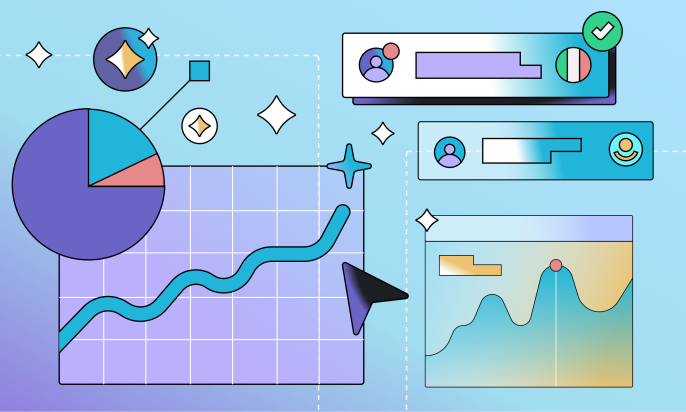The sales process has changed drastically in the past few decades.
The vulture approach to sales has been replaced by automation, tools, and social selling.
The problem? Too many sales teams are trying to apply these new tools while still using the same old approaches.
Then they can't figure out why their sales are sluggish.
It's time to talk about being both efficient and effective in the sales world.
This webinar covers why a sales process is so critical to success, how to use automation, and how tools like Leadfeeder, LinkedIn Sales Navigator, and scheduling tools can make it easier to guide prospects through the buyer's journey.
Here's what Jakob of YourSales and Peter, Customer Success leader at Leadfeeder, had to say about building a more effective sales process and what tools are critical to sales success.
Note: Want to streamline your sales process with the right sales tech? Sign up for Leadfeeder's free 14-day trial to learn how to target the ideal prospects for your business.
4 tips for creating an effective sales process
The vulture style of the sales professional is a thing of the past. Today's salespeople need to act with integrity and authenticity to help customers solve their problems.
That is where sales tech comes in. Tools like CRM, email marketing, and even Leadfeeder can help you connect with prospects and help them make better decisions for themselves.
As a result, you make more sales and your prospects can make better business decisions.
It's a win-win.
But, if you don't have a sales process that your newly acquired sales technology fits into, then it just ends up sitting over in a corner not getting used.
And lower sales productivity.
Before implementing tech tools, you've got to make sure your sales process is streamlined. Here are a few of the most critical steps in building a successful sales process.
Create an ideal client profile
This is a fundamental step for any business. You need to define who your buyers are and who the decision-maker are at that business. If you don't, then there's no way that you can build awareness and help them educate themselves.
Why? Because, first, you don't know what kind of companies are particularly successful in using your solution. And second, you don't know who is making buying decisions.
Remember that businesses don't make decisions based on one person — there's likely a whole team.
Make sure teams are aligned
Almost every decision is going through consensus with a team of people either at mid-level management, senior management level, or even board level. All these folks need to be synced.
It is incredibly important to get those people aligned so that they can make a decision together about your solution and can help their company solve their problems. This needs to be an early step in your process if you want to avoid wasting everyone's time.
Figure out how to communicate
Once you've figured out who your ideal prospect is, who makes decisions, and got their teams aligned, it's time to talk to them. How does that happen?
Does that happen face to face? Does that happen virtually via a call? Or does it happen over video?
After that first communication, then what happens? You want to keep educating the prospects but do you do presentations? Do you send out collateral? Do you bring people into seminars? Do you host webinars? Or, do you take an account-based marketing approach and create custom content?
It's closing time
Now it is time to get that commitment.
How do clients sign? What do your contracts look like? That is all the stuff that you need to think about when you map your process to make sure you always know what the next step is.
Then, and only then, should you be looking at sales tools.
4 sales tools to boost efficiency
We spent a ton of time covering the importance of the sales process — but there's a really good reason for that. Once you've got your sales process down, you'll have a much better idea of what tools you actually need and where they will fit in the sales process.
Otherwise, you'll just end up paying for a bunch of tools with little to no idea when or how to use them. Here are a few tools Jakob and Peter shared in the webinar.
Automatic scheduling
Jakob shared that he is a huge fan of automatic scheduling. He says,
"I've...booked nearly 2000 meetings just using automatic scheduling. So that's 2000 times that I didn't have to go, "When do you have time? When do I have time? No, I don't have time at that time, do you have time at this time?"
It's a great way to save time so you can focus on more important tasks.
Automatic scheduling eliminates a ton of back and forth by letting the client pick what time works for them. You can list a handful of times when you are available, and let the client choose the best time.
In some industries, you might use that back and forth to figure out how difficult the customer is to deal with and figure out what resources you'll need to allocate to them —- and that's fine.
You need to make smart decisions on where to automate and where to stick with manual because that's just what works better for you and your industry.
Sales Navigator
Sales Navigator is a powerful tool for sales teams to research a prospect on LinkedIn and help you figure out if a company fits your ideal client profile.
If it is, then you can dig a little deeper, find out if you or someone on your team has a first-degree connection. If you do, then you just reach out to them and start building that relationship.
If not, then you might take a different trail and start following it up with the CXO or a VPO, whichever kind of decision-maker is right for you. Or actually, you could start from the bottom of the organization and build your relationships up.
Your approach through Sales Navigator will depend on your sales methodology and your industry, but it's also a really flexible tool that integrates with other tools like Salesforce.
Leadfeeder
Leadfeeder is a great way to automate a portion of the sales process while gaining access to really high-quality leads. One way it can help is by noting recurring website visits and pushing them into a separate process for recurring visits.
You can also set up filters for companies who have visited a certain page, or taken some other action. These custom feeds make it really easy to separate high-value leads so you can follow up with them via LinkedIn or email, whatever makes the most sense for your company.
One of the most powerful things about Leadfeeder is that you can set up all sorts of context. You can base it on where people are coming from, and what pages they've been viewing, even how long they were on your site. Then you can channel those leads to the team that's best able to help those prospects.
Zapier
Zapier is a tool that lets users integrate tools that don't organically work together. And it is super powerful for sales teams.
For example, in Zapier you can build a whole loop where you boil down, say, 5,000 leads in Leadfeeder, all the way down to five or ten prospects that really tick all your boxes. And without making your sales team jump from tool to tool.
Once you have that list in Zapier, bring it over to Google Sheets, and use that list of companies, and enter it into a LinkedIn Sponsored post. Suddenly you're able to do some really basic ABM and target the companies that tick all your boxes. Then, you can provide them with very conversion-based content. Now a lot of people at companies that have a real need for what you offer are being made aware of your product, your services, and your company.
This can help you optimize not just your sales process, but also improving on your ad spend by targeting prospects that are more likely to be interested in your company.
Conclusion
The first step to boosting sales efficiency is to build a baseline sales process. And while this might not be the exact method you use with every prospect, it gives your team a path to take with each and every client. When one step wraps up, you know exactly what you should be doing next — and when to implement certain tools.
Watch the full webinar below.
Note: Want to streamline your sales process with the right sales tech? Sign up for Leadfeeder's free 14-day trial to learn how to target the ideal prospects for your business.
Now that you're here
Leadfeeder is a tool that shows you companies that visit your website. Leadfeeder generates new leads, offers insight on your customers and can help you increase your marketing ROI.
If you liked this blog post, you'll probably love Leadfeeder, too.
Sign up

![Digital Agencies & Sales The Art & Science of Closing Deals [Webinar Recap]](http://images.ctfassets.net/plii0v5gbc4s/4rdLXaWeyiYQnmxA7eMPnk/eb8e7d5ade228c7f525dc0f8ce4cc8a2/digital-agency-sales-webinar-header.png?w=686&q=80)





